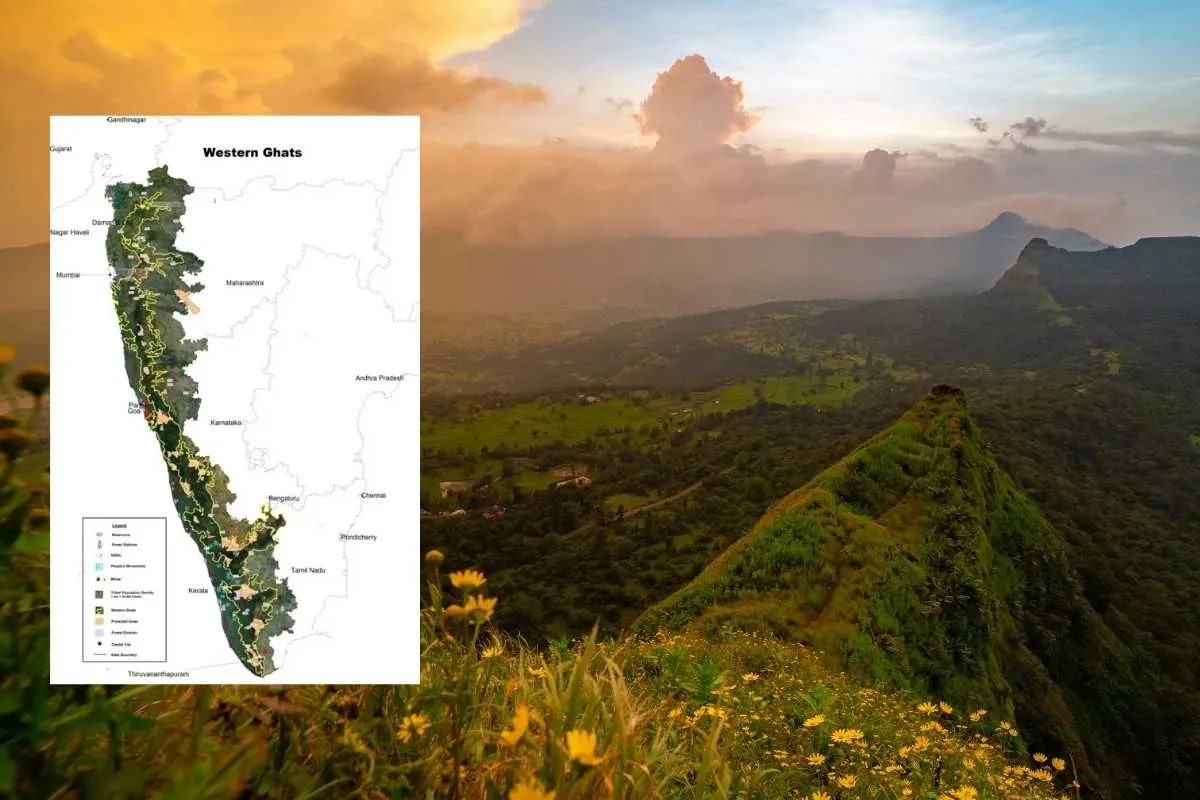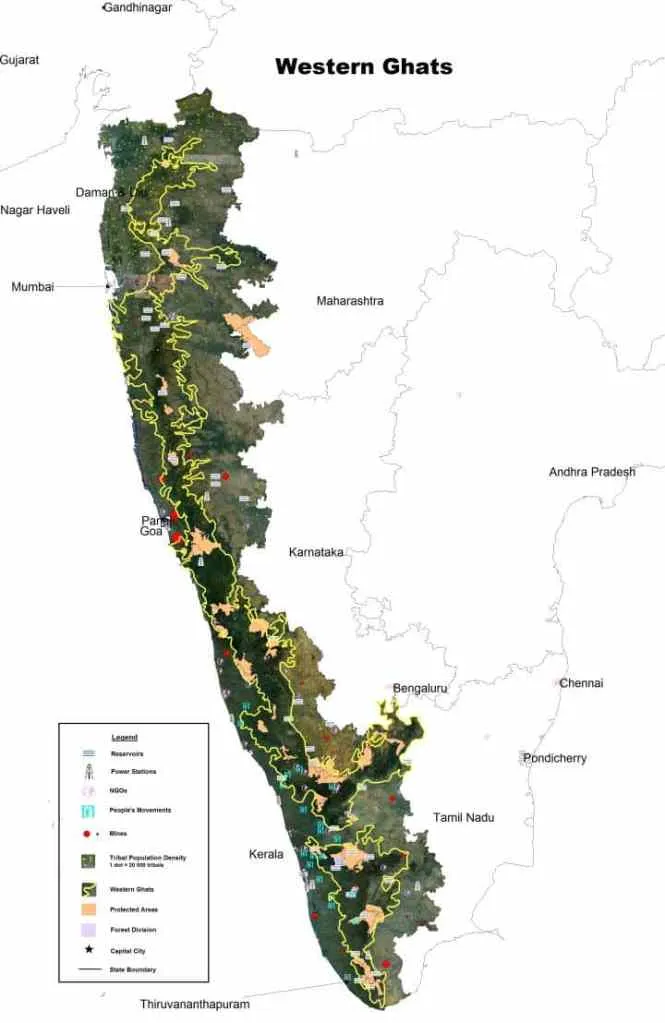On September 12, 2022, the Supreme Court of India dismissed a public interest litigation (PIL) filed by Kerala farmers’ non-profit Krashak Shabdam.
The group has contested the designation of a 56,825 square kilometer area spanning six states as the Western Ghats Ecologically Sensitive Zone (ESZs) by the Madhav Gadgil and K Kasturirangan Committees.
Also Read: Why are farmers in Kerala protesting against Eco-Sensitive Zones?
According to the Environment Protection Act of 1986, Eco-Sensitive Locations (ESAs) are areas that the Ministry of Environment, Forest and Climate Change (MoEFCC) has designated as being close to Protected Areas, National Parks, and Wildlife Sanctuaries. The main goal is to control specific activities around National Parks and Wildlife Sanctuaries in order to reduce the harm that these activities do to the delicate environment around the protected areas.

The Supreme Court dismissed this petition on the grounds of the notification released in July 2022. The draft notification released in July released the development of any “Red” category industry, including mining, thermal power plants, and other related businesses. The Court did not see any justification for using its authority under Article 32 of the Indian Constitution. This Article is also known as the heart and soul of the Constitution since it grants citizens the right to approach the Supreme Court in case of any violation of rights.
Gujarat, Maharashtra, Goa, Karnataka, Kerala, and Tamil Nadu are the six states in question. The MoEFCC released its fourth draft notification in 2018, and the petition was submitted in 2020. The Centre’s notification has a footnote that makes it clear that the “actual area will be finalized based on the recommendations of the State, views of stakeholders, and ESZ expert committee” despite the fact that the notification has raised concerns in the Western Ghats region and has shown signs of becoming a political issue ahead of the upcoming Assembly elections.
What are Eco sensitive zones (ESZs)?
These are transition zones around protected forests, that minimize forest depletion and human animal conflicts.
There is two types of approach for protecting these areas. First is Inclusive approach which involves human beings in conservation other is exclusionary approach which ban human’s entry into protected area. India is following exclusionary approach which failed in other countries badly.
How we are approaching it?
According to The National Wildlife action plan 2002-2016 of Ministry of Environment, Forest and Climate Change (MoEFCC) each state govt. has to declare 10KM area around protected forest, sanctuary and National park as ECO sensitive zone. Here most of the human activities will be banned, we can call it an exclusionary approach.
In case of western Ghats each state where western ghats situated has to demarcate ECS around it to preserve biodiversity of the region. Draft notification demarcates 46,832 sq km area in 5 states, excluding Kerala.
Kerala has already demarcated it’s ECZ of 9,993.7 sq kms.
ESZs in 5 States
- 20,668 sq km in Karnataka
- 1,461 sq km in Goa
- 17,340 sq km in Maharashtra,
- 6,914 sq km in Tamil Nadu
- and 449 sq km in Gujarat.
These activities will be banned in in the ESZs
- Complete ban on mining
- Ban on quarrying and sand mining
- If there are mines, they need to be phased out in 5 Years
- No thermal power plant allowed in ESZ
- All industries which have pollution index of 60 and above will not be allowed
- Construction of new townships and area development work will be banned
What is allowed in ESZs?
- Existing healthcare facilities will continue
- New hydropower project can operate on the basis of Environmental Impact assessment
- Orange category industries with pollution index below 51
- White category industry will be allowed in ESZ
How will they keep check?
- Monitoring center for western ghats will be established by environment ministry with support of state governments of western ghat regions.
- State pollution control board and the regional office of the ministry will monitor clearance for activities allowed in ESZ
- All such activities which has environmental and forest clearance will be monitored once a year.
- State govt has to prepare ‘State health report’ of the western ghats region within their jurisdiction.
Pros of ESZs
They act as a shock absorber or transition zone which provide more protection to forests and protected areas.
Cons of ESZs
- Those who are opposing ESZs claim that 10 KM of areas around protected areas already has habitations. This will affect livelihood of people living in those areas.
- People living in ECZs have no access to schools, healthcare facilities, electricity and water connection.
- Pucca house not allowed in this area.
- Farmers don’t get compensation on crop failure because these are forest lands.
Prominence of Western Ghats

- The Western Ghats mountain range predates the Himalayas. The Western Ghats comprise of geographic characteristics of tremendous significance, teaming with biological diversity.
- The Indian monsoon weather pattern is influenced by the high montane forest ecosystems at the site.
- The location offers one of the world’s best examples of the monsoon system, which helps to moderate the tropical climate of the area. It is regarded as one of the eight hotspots of biological diversity in the world.
- The site’s forests are home to at least 325 species of fish, amphibians, reptiles, birds, and other wildlife that are globally threatened.
- These forests are some of the best examples of non-equatorial tropical evergreen forests anywhere.
Keep Reading
Part 1: Cloudburst in Ganderbal’s Padabal village & unfulfilled promises
India braces for intense 2024 monsoon amid recent deadly weather trends
Support us to keep independent environmental journalism alive in India.
Follow Ground Report on X, Instagram and Facebook for environmental and underreported stories from the margins. Give us feedback on our email id greport2018@gmail.com.
Don’t forget to Subscribe to our weekly newsletter, Join our community on WhatsApp, and Follow our YouTube Channel for video stories.







